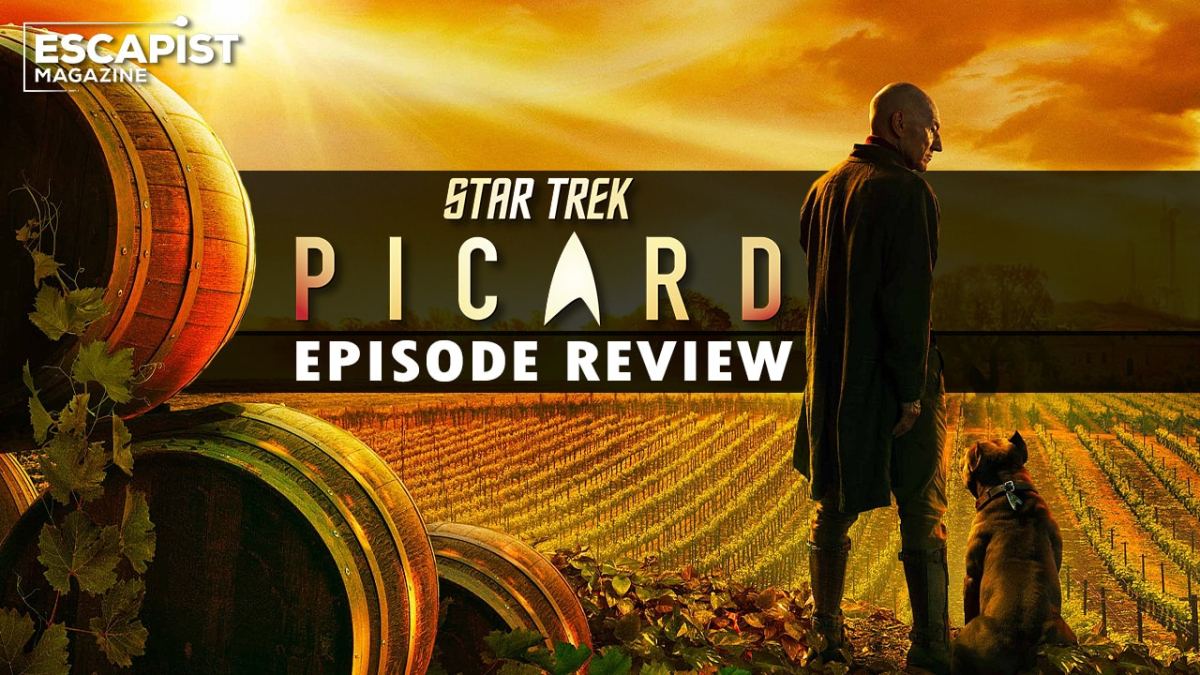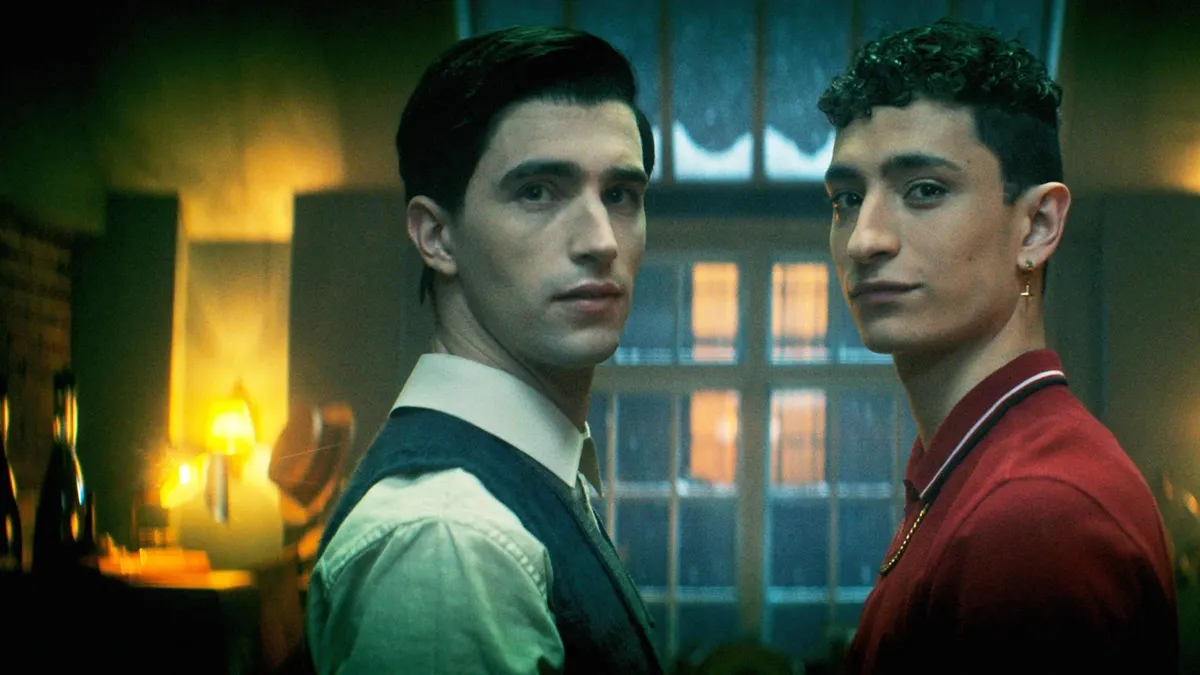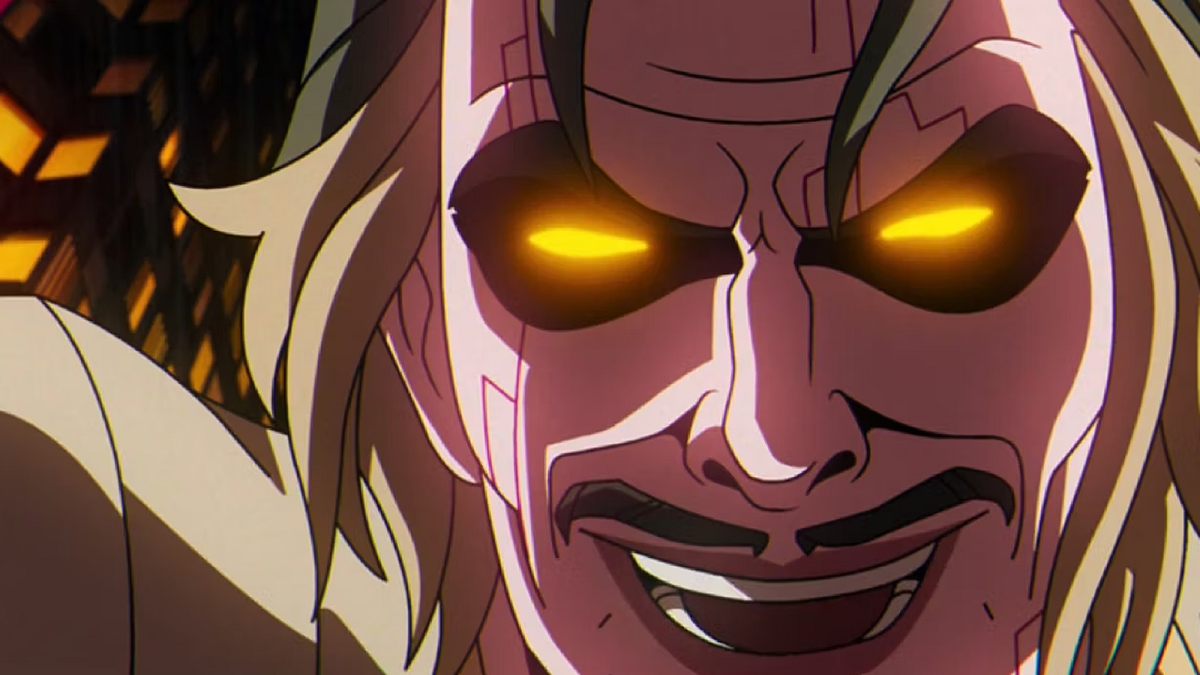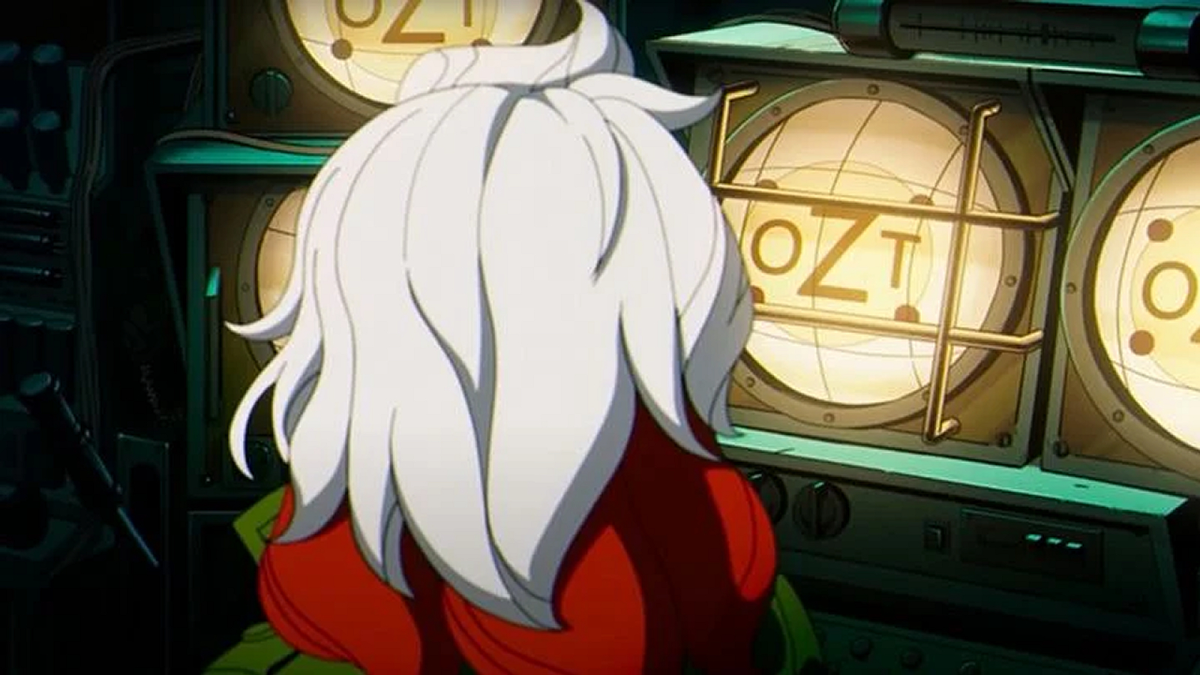This review contains spoilers for Star Trek: Picard, episode 7, “Nepenthe.”
“Real isn’t always better.” That’s what Counselor Troi says to Soji, and it acts as a thesis statement for “Nepenthe,” the strongest episode Star Trek: Picard has brought us thus far.
The seeming inability of Star Trek: Picard to explore any of its ideas in depth has been one of its greatest weaknesses, becoming worse every episode till now. “Nepenthe” is so great because it finally explores the central ideas of the show in new and interesting ways. It all starts with the post-retirement lives of our characters.
There’s a common theme between all the former StarFleet officers we’ve met so far in Star Trek: Picard. After a life surrounded by the most advanced technology ever created, it seems that these officers want nothing more than to go back to a time before all of that.
Picard could use his replicator to create any kind of wine he wanted, yet in his retirement, he moved to a rustic chateau. From what little we see of it, Raffi lived in a trailer with potted plants, ones that she was taking care of by hand. In “Nepenthe,” we spend some time with Counselor Troi and Will Riker (Jonathan Frakes). They live on the planet Nepenthe, where they grow their own vegetables, cook their own food, and live off the land.
You barely notice it, but the reason they want to seemingly move back in time is that “real” food is just different. In an earlier episode, Picard commented that replicator booze isn’t nearly as good, and despite being made up of the same constituent parts, real, homemade items are just better.
Of course, all this commentary is actually talking about Soji, an android whose very memories are fabrications. At this point, she is still uneasy in her synthetic nature, and she even laments that “Real is better,” after taking a bite of a home-grown tomato.

Well, real isn’t always better. We learn about Thad, Riker and Troi’s son. He was born on a StarFleet ship and has no home world, so he created his own ideal one. This is Ardani, an imaginary place that gave Thad a sense of belonging.
Thad is a mirror of Soji in this way, a flesh-and-blood human that still created his own memories, crafted his origin, and was no less human for it. If those memories are real to him, why would it matter that Soji’s are just as false?
If Thad only served the purpose of providing a counter to Soji’s idea of self, that would be fine. However, the brilliant thing about “Nepenthe” is that no element of story serves only one purpose. Thad allows us to understand the broader suffering brought on by the synthetic ban, even connecting us back to Picard’s motivation.
At some point, Thad developed a terminal illness. It was curable, but only with the use of a synthetic matrix that was banned at the time as a result of synthetics going rogue. He died because he could not access the lifesaving tools he needed. In this episode, we are reminded that Picard’s life was saved through the selfless actions of Data, and we are shown a version of what could have happened had Data not been there. From what we learn, Thad was showing signs of the kind of intelligence and culture that defines Picard, yet his life was snuffed out early because synthetics could not help him. The pain of the ban becomes more palpable, and we can understand why Picard has such an attachment to Soji and knows synthetics can be a force for good.
This exploration of real vs. unreal and synthetics is powerful, and it is the exact kind of thing that Star Trek is so well-equipped to handle with poise. These scenes felt like a really good episode of The Next Generation for the first time in this series.

Unfortunately, there is a whole other plot stinking up the joint that must still be discussed.
Agnes, a character that Star Trek: Picard clearly has no idea what to do with, is a double agent manipulated by the Romulans. This episode casually delivers an info dump about it. This scene feels like it’s giving away its hand way too early yet also is just obtuse enough to keep viewers confused. The only new piece of info that wasn’t already implied is that Agnes has a tracker on her, and that’s how Narek keeps finding the ship. Did we really need a two-minute-long, tone-killing scene to explain this?
On top of that, the entire plot on the ship revolves around a lazy fiction trope. Agnes comes very close to telling Rios she has a tracker, but they keep getting interrupted by action before she is able to spill the beans. It’s to the point where Rios suspects Raffi is the spy. This entire plot would not happen if the characters sat down and exchanged one sentence with each other. It’s a writing trick to build tension, but not a satisfying or creative one.
Elnor’s plot is somehow worse. It is built around fighting against characters we do not care about in the Zhat Vash, and the final death of Hugh doesn’t land in the way it should because the villains are not developed enough for us to latch onto anything.
Worse, the action filmmaking remains absolutely incompetent. It is edited with almost no sense of geography, with characters that look almost identical until you look at them for a second or two. The color grade is dingy and gross, which works for the Artifact but is a nightmare for understanding anything about where characters are. It’s nearly impossible to follow the action and nauseating to watch. The only saving grace is that this show has deemphasized action for the most part.
There are clearly huge flaws in “Nepenthe,” but I still loved this episode to death. The main plot with Picard, Riker, and Troi was so strong that no incompetent fight scene or contrived subplot could really take it down. By the end of this episode, we aren’t given the answers because the answers aren’t that simple. Complexity and nuance are where Star Trek lives, and even though we might not have an answer as to whether real truly is better, I know one thing for sure.
“Nepenthe” is the real deal.




